Will P
Member
- Joined
- Feb 13, 2025
- Messages
- 39
- Likes
- 14
Hi everyone!
This is my first post here.
Many thanks to Amir for the hard work and detailed measurements and analysis in each review.
Many thanks to the rest of the ASR community for the feedback and info provided.
It has full capabilities on the video side - DOLBY ATMOS AND DTS:X; HDMI 2.1A WITH 8K/4K Ultra HD; HDR10+, Dolby Vision, and HLG;
gaming-optimized video processing Variable Refresh Rate (VRR), Auto Low Latency Mode (ALLM), and Quick Frame Transport (QFT)
On the audio side has 5.1, 3.1.2 and DOLBY ATMOS HEIGHT VIRTUALIZER (5.1.2), Bluetooth, Zone B pre-out
Price on sale $249 (reg $399)
It's #2 on Amazon Best Sellers list. It's been on sale for the last 2 months.
I added DIY balanced attenuators (1:6) to the speaker outputs and I'm using it as balanced XLR preamp.
My main system is running Yamaha CX-A5000 pre-pro so that would be my benchmark for comparison.
I'll be using the Onkyo TX-SR3100 mainly for music (70%), BD concerts 5.1 (20%) and movies (10%).
I'll be looking at distortion levels, input signal clipping levels, output signal clipping levels, power protection levels and hopefully I can figure out the logic behind the well known power protection in Onkyo/ Pioneer brands.
Below are my notes I took for my personal use while I did the tests right out of the box after the latest firmware update was done.
I didn't do any room calibration, etc. I'll be using it as pre-pro to my active speakers through MiniDSP.
The Onkyo is in daily use for a month already. I'm really happy with it. For me the combined audio&video price/performance is unbelievable.
For the measurements I'm using FiiO X5 digital music player (max output at player level "120" gives 3.2VRMS (9.0VPP) no clipping, level steps 0.5dB), oscilloscope FNIRSI 2C23T, RTA Behringer DEQ2496
Let me know if you need more info on the notes below:
==========================
NOTE: Input Level Limit: 2VRMS (level 112 from Fiio X5) would start clipping the AVR if NOT IN DIRECT mode - the ONKIO Line (CD) inputs MAX LEVEL 2VRMS (2.8VPP).
In DIRECT mode - the MAX output from FiiO X5 is 3.2VRMS (9.0VPP) - still no clipping on FiiO or AVR ! ! !
=======================
At 0dB maintained signal (noise, sine wave) at AVR the output would switch (relay clicks) to 16VRMS and clips output signal - distortion starts
(rail voltage reduced 40% -7.5dB from 38VRMS to 16VRMS).
KEEP AVR VOLUME LEVEL at -10dB or below to avoid overheating protection rail voltage reduction.
At 2VRMS input (CD) at Music Direct setting and (-10dB) AVR volume level the output at speaker terminals is 12 VRMS (34VPP) and
never goes into reduced rail voltage since output voltage is already below it ! ! ! (that's 20W into 8Ohm load)
NOTE: For getting Balanced XLR signal out from the AVR ONKYO Speaker Terminals the balanced attenuator should be 1:6
so that at line 2VRMS and output level -10dB and attenuator (voltage divider) ratio 1:6 the signal at the XLR output would be 2VRMS.
2VRMS(XLR target voltage) : 12VRMS (speaker terminal output voltage at -10 Volume setting) = 1:6
NOTE: For regular Music material the unclipped output goes to 40VRMS (110VPP).
With regular music (not sustained sine waves) that unclipped peak output is possible at 2VRMS input and 0dB AVR Volume.
============
NOTE: The max speaker output with clipping is 38VRMS (110VPP). XLR attenuator should be kept at 1:8 or more to prevent XLR signal
going above 18dBU (6VRMS); 1:6 att = 6.3VRMS; 1:8 att = 4.7VRMS absolute max at clipping; 1:12 att = 3.1VRMS = 12dBu (standard level)
============
NOTE: Output terminal when loaded with 4 Ohm speaker vs no load - the voltage drops from 17.4 VRMS to 17.0 VRMS (70W output on 1ch)
when one front channel speaker gets connected and no other speakers connected - solid rail voltage
===========================================================================================================================
NOTE: Speaker Output MAX before clipping SIN wave = 40VRMS (110VPP). That's peak of close to 200W into 8 Ohm speaker (160W/8ohm ch rated)!!!
That is at 0dB Volume Level at MAX input Line (CD) 2VRMS.
Thermal protection would bring it back to 14VRMS (40VPP) after 10 sec or so if signal is maintained unless the volume level gets reduced below 14VRMS.
NOTE: The ONKYO doesn't lock itself at thermal protection. Just reduce the volume -10dB and it resets itself 10-15 secs later.
It allows for temporary peaks of (40VRMS/14VRMS) = 9db ! ! ! It's all good. You will not see it during regular music playback.
====================
Latest Measurements:
ONKYO Input Line (CD) - max levels before clipping
Movie TV / Direct: Max Line Input 3.1VRMS (MAX output 120 from FiiO X5) - still no input clipping
Music / Direct: Max Line Input 3.1VRMS (MAX output 120 from FiiO X5) - still no input clipping
All other Listening Modes - 2.0 VRMS Max Line (CD) Input Level before clipping
======================
Max output speaker terminals (no load; signal to XLR adaptor only) at max input 3.1VRMS (12dBu) sine wave:
3.1VRMS in Line Input CD in Music/ Direct-
Volume -10dB; output 21VRMS - no thermal switching
Volume -8dB; output 27VRMS - no thermal switching
Volume -7.5dB; output 29VRMS (2.5dB below output clipping) - no thermal switching
Volume -7.0dB; output 31VRMS (2dB below output clipping) - thermal switching after 3min to 16VRMS (-12.5dB volume needed for no clip);
It needs to get Volume reduced at or below the new lower rail voltage (-13dB volume for 15.5VRMS) and resets itself within 10sec and full 38VRMS (peak) output capability is restored
Volume -5.0dB; output 38VRMS (MAX output before clipping) - thermal switching after 3min to 16VRMS (-12.5dB volume needed for no clip); It needs to get Volume reduced
at or below the new lower rail voltage (-13dB volume for 15.5VRMS) and resets itself within 10sec and full 38VRMS (peak) output capability is restored
When playing MUSIC - protection becomes extremely tolerant - it engages when MUSIC volume output level is at +9dB (that's 14dB above clipping speaker output power)
It looks like the internal overload circuitry engages above 30VRMS output (volume -7.0dB) at speaker terminals even when no load (speaker) is connected.
Above that level rail voltage gets switched to provide only 16VRMS and distortion starts (-12.5dB volume level to get adjusted at Onkyo for no clip)
and it needs volume reduced below the new lower rail voltage (-13dB volume to match) and it resets rail voltage for full peak output of 38VRMS (-5dB volume level) within 5 sec.
NOTE: At MAX Input Line Level 3.1VRMS the ONKYO maintains 30VRMS Speaker Terminals output for sustained levels and 38VRMS for not-sustained (less than 20sec!!!)
signals. That's sustained signals at (-2dB) below clipping - more than generous - great;
If signal is sustained above 30VRMS then protection reduces rail voltage to output 16VRMS (-12.5dB output level) and distortion starts until volume is
reduced to -13dB (no clipping with the reduced rail voltage) and full rail voltage is resorted within 5sec.
================================
Max output speaker terminals (no load; signal to XLR adaptor only) at max input 1.7VRMS (7dBu) sine wave - At that level 0dB Volume Level is just below clipping output:
1.7VRMS in Line Input CD in Music/ Direct-
Volume 0.0dB; output 38VRMS - thermal switching on sine signal after 30 sec - that's full output below clipping - voltage drops to 17VRMS (
Volume +18.0dB; output 40VRMS, 112VPP - heavy clipping - thermal switching on sine signal after 30 sec - voltage drops to 17VRMS - volume reduced to -5dB - thermal
switching resets itself and capability for full sustained not-clipped output sine wave at 0dB volume level at 39VRMS
When playing MUSIC - protection becomes extremely tolerant - it engages when MUSIC volume output level is at +12dB (that's 12dB above clipping speaker output power)
NOTE: When Line Input level (CD) is 1.7VRMS (7dBu) the thermal protection engages when output clipping occurs for 30sec (above volume 0dB setting) and resets itself
when volume reduced to -5dB.
=========================
Bottom line:
1. Music playing - I never managed to trigger Power Protection in real life while using the speaker outputs as XLR preamp - that is Power Protection based on output voltages alone.
( I like listening at reference levels with 122dB peaks).
Power protection based on output signal voltage doesn't engage until severe clipping is maintained (+12dB above clipping)
2. Power protection usually restores itself when signal lowered 8dB below clipping. For severe power protection case turning AVR Off/On restores power. No need to unplug AVR.
3. Direct Mode Noise levels at 1:6 XLR attenuator and 2VRMS input - noise highest RTA band is 10k-20k with level -120dB, the rest of the noise is -125dB. RMS noise level around -96dB or better.
If you use XLR attenuator ratio 1:20 the noise will drop further -10dB.
4. Stereo Mode (internal DSP with bass management) Noise levels at 1:6 XLR attenuator and 2VRMS input = -105dB RTA levels. RMS noise level is around -85dB.
If you use XLR attenuator ratio 1:20 the noise will drop further -10dB.
5. Direct Mode Distortion levels at 1:6 XLR attenuator and 2VRMS input - 2-nd harmonic at -100dB, 3-rd harmonic at -105dB. SINAD looks like is around -95dB.
6. Stereo Mode (internal DSP with bass management) Distortion levels at 1:6 XLR attenuator and 2VRMS input - 2-nd harmonic at -90dB, 3-rd harmonic at -95dB. SINAD looks like is around 85dB.
7. Heat - I can barely tell the Onkyo is on when I touch it. Idling power is around 25W. It warms up just a little more when running at reference levels.
The Yamaha CX-A5000 on the other hand is warm even when idling and doesn't have any power amps inside, just pre-amps.
Long term heat exposure kills electronics. Low heat output is very important for me.
Onkyo performs really well in heat output too. I'm really surprised.
Noise observation "ear against the tweeter" - AVR level at MAX (0.0dB which is capable of 122dB peaks sound level), digital player plugged in "CD" input, player turned off: No noise can be heard from listening position.
Direct Mode - no noise coming from speakers while against the speaker
Stereo Mode - slight noise heard when against the speaker; noise goes away when AVR output level reduced to -10dB or below.
I'm really happy with the AVR and really surprised by the measurements and actual performance. I bought it mostly for the video capabilities, I'm keeping it for the audio capabilities. $249
This is my first post here.
Many thanks to Amir for the hard work and detailed measurements and analysis in each review.
Many thanks to the rest of the ASR community for the feedback and info provided.
Onkyo TX-SR3100
It's advertised as 5.2 but in reality it is 5.1 with 2 subwoofer connectors.It has full capabilities on the video side - DOLBY ATMOS AND DTS:X; HDMI 2.1A WITH 8K/4K Ultra HD; HDR10+, Dolby Vision, and HLG;
gaming-optimized video processing Variable Refresh Rate (VRR), Auto Low Latency Mode (ALLM), and Quick Frame Transport (QFT)
On the audio side has 5.1, 3.1.2 and DOLBY ATMOS HEIGHT VIRTUALIZER (5.1.2), Bluetooth, Zone B pre-out
Price on sale $249 (reg $399)
It's #2 on Amazon Best Sellers list. It's been on sale for the last 2 months.
I added DIY balanced attenuators (1:6) to the speaker outputs and I'm using it as balanced XLR preamp.
My main system is running Yamaha CX-A5000 pre-pro so that would be my benchmark for comparison.
I'll be using the Onkyo TX-SR3100 mainly for music (70%), BD concerts 5.1 (20%) and movies (10%).
I'll be looking at distortion levels, input signal clipping levels, output signal clipping levels, power protection levels and hopefully I can figure out the logic behind the well known power protection in Onkyo/ Pioneer brands.
Below are my notes I took for my personal use while I did the tests right out of the box after the latest firmware update was done.
I didn't do any room calibration, etc. I'll be using it as pre-pro to my active speakers through MiniDSP.
The Onkyo is in daily use for a month already. I'm really happy with it. For me the combined audio&video price/performance is unbelievable.
For the measurements I'm using FiiO X5 digital music player (max output at player level "120" gives 3.2VRMS (9.0VPP) no clipping, level steps 0.5dB), oscilloscope FNIRSI 2C23T, RTA Behringer DEQ2496
Let me know if you need more info on the notes below:
==========================
NOTE: Input Level Limit: 2VRMS (level 112 from Fiio X5) would start clipping the AVR if NOT IN DIRECT mode - the ONKIO Line (CD) inputs MAX LEVEL 2VRMS (2.8VPP).
In DIRECT mode - the MAX output from FiiO X5 is 3.2VRMS (9.0VPP) - still no clipping on FiiO or AVR ! ! !
=======================
At 0dB maintained signal (noise, sine wave) at AVR the output would switch (relay clicks) to 16VRMS and clips output signal - distortion starts
(rail voltage reduced 40% -7.5dB from 38VRMS to 16VRMS).
KEEP AVR VOLUME LEVEL at -10dB or below to avoid overheating protection rail voltage reduction.
At 2VRMS input (CD) at Music Direct setting and (-10dB) AVR volume level the output at speaker terminals is 12 VRMS (34VPP) and
never goes into reduced rail voltage since output voltage is already below it ! ! ! (that's 20W into 8Ohm load)
NOTE: For getting Balanced XLR signal out from the AVR ONKYO Speaker Terminals the balanced attenuator should be 1:6
so that at line 2VRMS and output level -10dB and attenuator (voltage divider) ratio 1:6 the signal at the XLR output would be 2VRMS.
2VRMS(XLR target voltage) : 12VRMS (speaker terminal output voltage at -10 Volume setting) = 1:6
NOTE: For regular Music material the unclipped output goes to 40VRMS (110VPP).
With regular music (not sustained sine waves) that unclipped peak output is possible at 2VRMS input and 0dB AVR Volume.
============
NOTE: The max speaker output with clipping is 38VRMS (110VPP). XLR attenuator should be kept at 1:8 or more to prevent XLR signal
going above 18dBU (6VRMS); 1:6 att = 6.3VRMS; 1:8 att = 4.7VRMS absolute max at clipping; 1:12 att = 3.1VRMS = 12dBu (standard level)
============
NOTE: Output terminal when loaded with 4 Ohm speaker vs no load - the voltage drops from 17.4 VRMS to 17.0 VRMS (70W output on 1ch)
when one front channel speaker gets connected and no other speakers connected - solid rail voltage
===========================================================================================================================
NOTE: Speaker Output MAX before clipping SIN wave = 40VRMS (110VPP). That's peak of close to 200W into 8 Ohm speaker (160W/8ohm ch rated)!!!
That is at 0dB Volume Level at MAX input Line (CD) 2VRMS.
Thermal protection would bring it back to 14VRMS (40VPP) after 10 sec or so if signal is maintained unless the volume level gets reduced below 14VRMS.
NOTE: The ONKYO doesn't lock itself at thermal protection. Just reduce the volume -10dB and it resets itself 10-15 secs later.
It allows for temporary peaks of (40VRMS/14VRMS) = 9db ! ! ! It's all good. You will not see it during regular music playback.
====================
Latest Measurements:
ONKYO Input Line (CD) - max levels before clipping
Movie TV / Direct: Max Line Input 3.1VRMS (MAX output 120 from FiiO X5) - still no input clipping
Music / Direct: Max Line Input 3.1VRMS (MAX output 120 from FiiO X5) - still no input clipping
All other Listening Modes - 2.0 VRMS Max Line (CD) Input Level before clipping
======================
Max output speaker terminals (no load; signal to XLR adaptor only) at max input 3.1VRMS (12dBu) sine wave:
3.1VRMS in Line Input CD in Music/ Direct-
Volume -10dB; output 21VRMS - no thermal switching
Volume -8dB; output 27VRMS - no thermal switching
Volume -7.5dB; output 29VRMS (2.5dB below output clipping) - no thermal switching
Volume -7.0dB; output 31VRMS (2dB below output clipping) - thermal switching after 3min to 16VRMS (-12.5dB volume needed for no clip);
It needs to get Volume reduced at or below the new lower rail voltage (-13dB volume for 15.5VRMS) and resets itself within 10sec and full 38VRMS (peak) output capability is restored
Volume -5.0dB; output 38VRMS (MAX output before clipping) - thermal switching after 3min to 16VRMS (-12.5dB volume needed for no clip); It needs to get Volume reduced
at or below the new lower rail voltage (-13dB volume for 15.5VRMS) and resets itself within 10sec and full 38VRMS (peak) output capability is restored
When playing MUSIC - protection becomes extremely tolerant - it engages when MUSIC volume output level is at +9dB (that's 14dB above clipping speaker output power)
It looks like the internal overload circuitry engages above 30VRMS output (volume -7.0dB) at speaker terminals even when no load (speaker) is connected.
Above that level rail voltage gets switched to provide only 16VRMS and distortion starts (-12.5dB volume level to get adjusted at Onkyo for no clip)
and it needs volume reduced below the new lower rail voltage (-13dB volume to match) and it resets rail voltage for full peak output of 38VRMS (-5dB volume level) within 5 sec.
NOTE: At MAX Input Line Level 3.1VRMS the ONKYO maintains 30VRMS Speaker Terminals output for sustained levels and 38VRMS for not-sustained (less than 20sec!!!)
signals. That's sustained signals at (-2dB) below clipping - more than generous - great;
If signal is sustained above 30VRMS then protection reduces rail voltage to output 16VRMS (-12.5dB output level) and distortion starts until volume is
reduced to -13dB (no clipping with the reduced rail voltage) and full rail voltage is resorted within 5sec.
================================
Max output speaker terminals (no load; signal to XLR adaptor only) at max input 1.7VRMS (7dBu) sine wave - At that level 0dB Volume Level is just below clipping output:
1.7VRMS in Line Input CD in Music/ Direct-
Volume 0.0dB; output 38VRMS - thermal switching on sine signal after 30 sec - that's full output below clipping - voltage drops to 17VRMS (
Volume +18.0dB; output 40VRMS, 112VPP - heavy clipping - thermal switching on sine signal after 30 sec - voltage drops to 17VRMS - volume reduced to -5dB - thermal
switching resets itself and capability for full sustained not-clipped output sine wave at 0dB volume level at 39VRMS
When playing MUSIC - protection becomes extremely tolerant - it engages when MUSIC volume output level is at +12dB (that's 12dB above clipping speaker output power)
NOTE: When Line Input level (CD) is 1.7VRMS (7dBu) the thermal protection engages when output clipping occurs for 30sec (above volume 0dB setting) and resets itself
when volume reduced to -5dB.
=========================
Bottom line:
1. Music playing - I never managed to trigger Power Protection in real life while using the speaker outputs as XLR preamp - that is Power Protection based on output voltages alone.
( I like listening at reference levels with 122dB peaks).
Power protection based on output signal voltage doesn't engage until severe clipping is maintained (+12dB above clipping)
2. Power protection usually restores itself when signal lowered 8dB below clipping. For severe power protection case turning AVR Off/On restores power. No need to unplug AVR.
3. Direct Mode Noise levels at 1:6 XLR attenuator and 2VRMS input - noise highest RTA band is 10k-20k with level -120dB, the rest of the noise is -125dB. RMS noise level around -96dB or better.
If you use XLR attenuator ratio 1:20 the noise will drop further -10dB.
4. Stereo Mode (internal DSP with bass management) Noise levels at 1:6 XLR attenuator and 2VRMS input = -105dB RTA levels. RMS noise level is around -85dB.
If you use XLR attenuator ratio 1:20 the noise will drop further -10dB.
5. Direct Mode Distortion levels at 1:6 XLR attenuator and 2VRMS input - 2-nd harmonic at -100dB, 3-rd harmonic at -105dB. SINAD looks like is around -95dB.
6. Stereo Mode (internal DSP with bass management) Distortion levels at 1:6 XLR attenuator and 2VRMS input - 2-nd harmonic at -90dB, 3-rd harmonic at -95dB. SINAD looks like is around 85dB.
7. Heat - I can barely tell the Onkyo is on when I touch it. Idling power is around 25W. It warms up just a little more when running at reference levels.
The Yamaha CX-A5000 on the other hand is warm even when idling and doesn't have any power amps inside, just pre-amps.
Long term heat exposure kills electronics. Low heat output is very important for me.
Onkyo performs really well in heat output too. I'm really surprised.
Noise observation "ear against the tweeter" - AVR level at MAX (0.0dB which is capable of 122dB peaks sound level), digital player plugged in "CD" input, player turned off: No noise can be heard from listening position.
Direct Mode - no noise coming from speakers while against the speaker
Stereo Mode - slight noise heard when against the speaker; noise goes away when AVR output level reduced to -10dB or below.
I'm really happy with the AVR and really surprised by the measurements and actual performance. I bought it mostly for the video capabilities, I'm keeping it for the audio capabilities. $249
Attachments
-
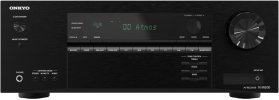 front_.jpg45.7 KB · Views: 221
front_.jpg45.7 KB · Views: 221 -
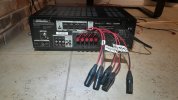 20250118_024758.jpg220.3 KB · Views: 203
20250118_024758.jpg220.3 KB · Views: 203 -
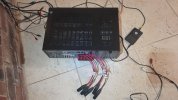 20250118_024200.jpg258.7 KB · Views: 188
20250118_024200.jpg258.7 KB · Views: 188 -
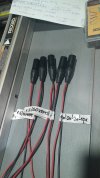 20250118_022741.jpg240.3 KB · Views: 178
20250118_022741.jpg240.3 KB · Views: 178 -
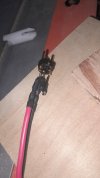 20250118_014105.jpg169.6 KB · Views: 176
20250118_014105.jpg169.6 KB · Views: 176 -
 20250118_013125.jpg268.6 KB · Views: 164
20250118_013125.jpg268.6 KB · Views: 164 -
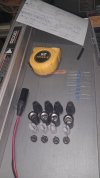 20250117_230934.jpg234.4 KB · Views: 159
20250117_230934.jpg234.4 KB · Views: 159 -
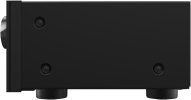 sidejpg.jpg13.2 KB · Views: 164
sidejpg.jpg13.2 KB · Views: 164 -
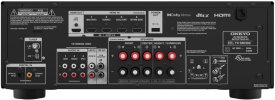 back.jpg81.2 KB · Views: 171
back.jpg81.2 KB · Views: 171
Last edited: